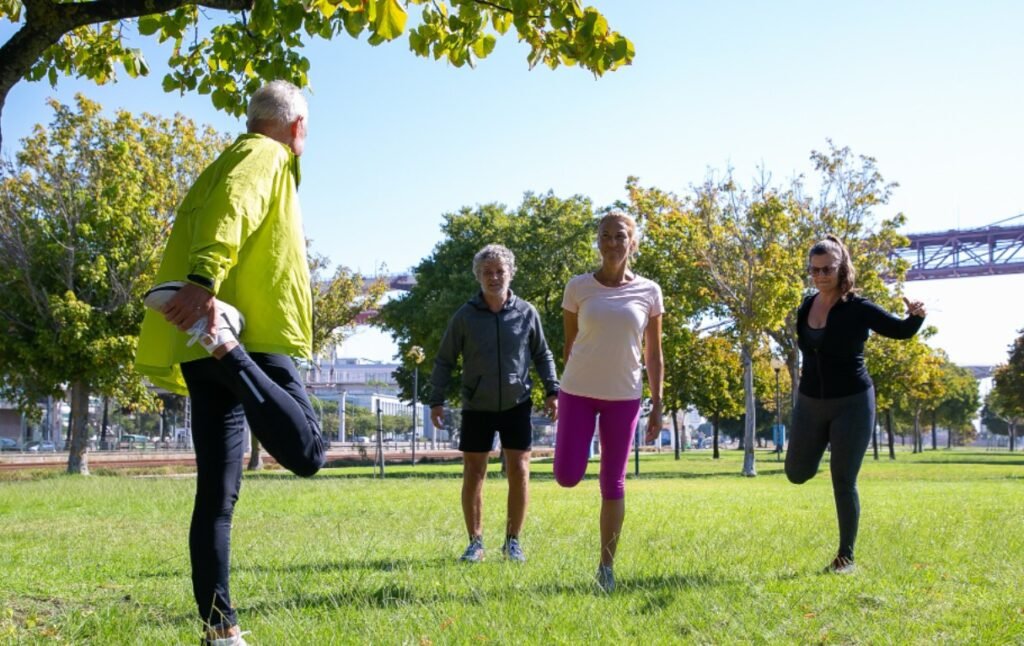In today’s fast-paced world, staying active aerobic exercise for weight loss has become more important than ever. With long hours spent sitting at desks, commuting, or engaging with screens, physical activity often takes a back seat. However, integrating regular workouts into your routine can significantly improve your overall health, energy levels, and mental well-being. Whether you’re aiming to lose weight, build strength, or simply lead a healthier lifestyle, workouts offer countless benefits that go far beyond just physical appearance.
What Are Workouts?
A workout is any structured physical activity that is done with the intention of improving fitness, strength, flexibility, or endurance. Workouts can vary widely in type and intensity. They can include cardiovascular exercises like running or cycling, strength training like lifting weights, flexibility exercises such as yoga or stretching, and high-intensity interval training (HIIT), which combines short bursts of intense activity with rest.
Types of Workouts
- Cardiovascular Workouts: These are exercises that raise your heart rate and help improve heart and lung health. Examples include running, swimming, dancing, brisk walking, and cycling. Cardio workouts are great for burning calories and improving endurance.
- Strength Training: This involves using resistance to build muscle strength and mass. Common forms include weightlifting, resistance band exercises, and bodyweight movements like push-ups or squats.
- Flexibility and Mobility Workouts: These include stretching routines, yoga, and Pilates. They help improve the range of motion in joints, reduce the risk of injury, and alleviate muscle tightness.
- High-Intensity Interval Training (HIIT): HIIT workouts alternate between short, intense bursts of activity and brief periods of rest. These workouts are efficient and can be completed in as little as 20–30 minutes, making them popular among people with busy schedules.
- Functional Training: These workouts mimic everyday movements and activities. They aim to improve balance, coordination, and strength for real-life tasks.
Physical Benefits of Working Out
The physical benefits of regular exercise are well-documented:
- Weight Control: Exercise helps burn calories and build muscle, both of which support healthy weight loss or maintenance.
- Improved Heart Health: Cardiovascular workouts strengthen the heart and improve blood circulation, lowering the risk of heart disease.
- Stronger Muscles and Bones: Resistance training increases bone density and muscle strength, which is particularly important as we age.
- Better Posture and Flexibility: Flexibility exercises improve range of motion and posture, reducing back and neck pain.
- Boosted Immune System: Regular moderate exercise can enhance immune function and reduce inflammation in the body.
Mental and Emotional Benefits
Exercise doesn’t just benefit the body; it plays a crucial role in mental health as well:
- Stress Relief: Physical activity increases the production of endorphins, the body’s natural mood elevators, which help reduce stress and anxiety.
- Better Sleep: Regular workouts contribute to deeper, more restful sleep, helping you feel more refreshed.
- Improved Mood: Exercise has been linked to a reduction in symptoms of depression and anxiety. It can also boost self-esteem and body image.
- Increased Energy: While it may seem counterintuitive, working out actually boosts your energy levels over time by improving circulation and oxygen flow.
Creating a Workout Routine
Starting a new workout routine can be overwhelming, especially for beginners. Here are some tips for creating a sustainable fitness plan:
- Set Realistic Goals: Start with small, achievable targets and gradually increase intensity and duration.
- Choose Activities You Enjoy: Whether it’s dancing, hiking, swimming, or weightlifting, enjoying your workout makes it easier to stick with it.
- Stay Consistent: Aim for at least 150 minutes of moderate aerobic activity or 75 minutes of vigorous activity each week, as recommended by health experts.
- Warm-Up and Cool Down: Always include time for stretching before and after workouts to prevent injury.
- Listen to Your Body: Rest is just as important as exercise. Give your muscles time to recover and avoid overtraining.
Conclusion
Workouts are not just a means to achieve a certain body type—they are a powerful tool for enhancing physical, mental, and emotional health. Incorporating regular physical activity into your lifestyle can lead to long-term benefits that extend well beyond the gym. No matter your age or fitness level, there’s a workout routine that can fit your needs and help you become the healthiest version of yourself. So lace up those shoes, grab your water bottle, and take the first step toward a more active, balanced life.
